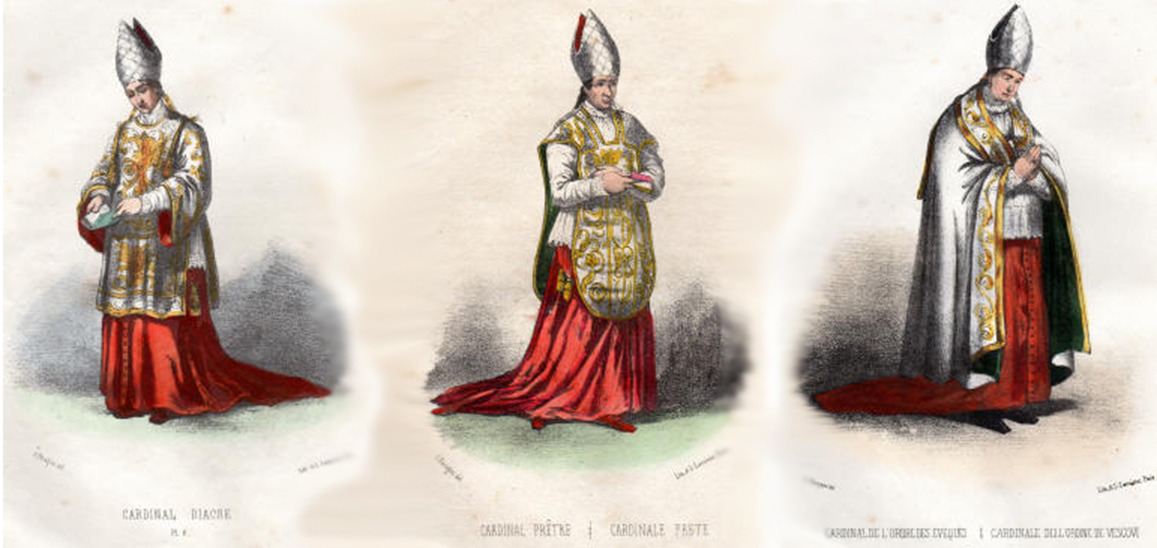 |
| St. Mary Major, from a recent trip by the Rad Trad to Rome |
Title says it all. I am re-producing below the text of the Papal Mass of Pascha Sunday as it likely would have been in the eighth century. The source is Cuthbert Ashley's translation of the Ordo Romanus Primus, which contains a proposed reproduction as the third appendix. The book, printed in 1905, is in the public domain and available on Google Books, so do not fret over copyrights.
Pay attention to what has changed and what has remained. The Mass would be at St. Mary Major, to join with our Lady in celebrating her Son's Resurrection, and possibly to give the Pope a breather after no less than three liturgies at the Lateran Cathedral. The opening antiphon, in Latin, would be the familiar Resurrexi et adhuc tecum sum Mass of Pascha, but is here sung with more than one psalm verse in between repetitions of the antiphons. As an entrance chant, it would be sung as long as the entrance procession lasted. Before the "little hours" became popular in the Roman Divine Office I am not so sure there would be a long introit, as Mattins and Lauds would precede such a Mass. But the introduction of the little hours put the Mass after Terce, meaning a return to the sacristy for Mass vestments.
The Kyrie is not in its more ancient litany form, and probably had not been since before St. Gregory the Great. The Gloria is sung, as it was on festal occasions at Papal Mass. Pay attention to the orations, which are the same as they are in the traditional Mass today. There is certainly more antiphonal singing throughout, which only comes to us in rare occasions like Holy Week (the real old Holy Week). I suspect this looked more like the prokeimenon of the Byzantine rite and less like the "responsorial psalm" of Pope Paul VI's rite. Yet the antiphonal singing was primarily, though not exclusively, handled by the cantors and "district officials"—probably meaning additional deacons and subdeacons who vested for Mass but did not perform the main actions associated with those orders such as assisting the celebrant with the chalice and reading the Gospel or Epistle; you get the idea. This brings up another important point: there would be several deacons and subdeacons at this Mass, and probably some priests who might have or might not have concelebrated. Concelebration was done on festive occasions and with the bishop (in this case the Pope) as a sign of the communion between the bishop,the parish priests, and the parish faithful. It was not done as regularly and as casually as today. It had meaning. Some remnants of this existed until 1964 at Papal Mass, where the cardinal-priests and cardinal-deacons would wear chasubles and dalmatics with mitres over their choir dress.
 |
See the cardinal-deacon, left, and cardinal-priest, right, remnants of the ancient manner of Papal Mass, which survived in the Papal liturgy until 1964.
source: http://interminomaris.tumblr.com |
The preface and Canon are basically the same as we have received them today. Some things differ though. The prayer for the dead is noted as a weekday practice that eventually became fixed on all days. There is a prayer of blessing for the first fruits of the season. With no supporting text the editor as inserted a Gallican prayer and a Roman prayer from the Feast of the Ascension right before the minor [and at this point, only] elevation.
With large gaps of inactivity on the celebrant's part—awaiting the end of the entrance, the gap at the offertory, the time for an exit procession to line up etc)—we can see how and where private prayer, which eventually became institutionalized, entered the Mass—prayers before the altar, the longer offering prayers for the Host and Chalice, and the Prologue of St. John. We also see some ritually and spiritually awkward practices and can understand why they died, such as announcing the location of tomorrow's Mass before the Communion of the Faithful!
Like it, love it, hate it, this is a fairly accurate reconstruction of a first millennium Roman Mass celebrated by the Pope. We see the very firm roots of the traditional liturgy, both in prayer and in movement, meaning it is the root in spirituality, too. Moreover, this is the clearest piece of evidence I have seen to support Fr. Quoex and Fr. Conrad's thesis that Papal Mass is the standard in the Roman rite, not parish Mass. Pontifical Mass and Solemn Mass clearly descend from the rite shown here, with some adjustments for the qualitatively different celebrant.
Enough of me. Look at the Mass and realize how the saints prayed then—and how they still pray now!












